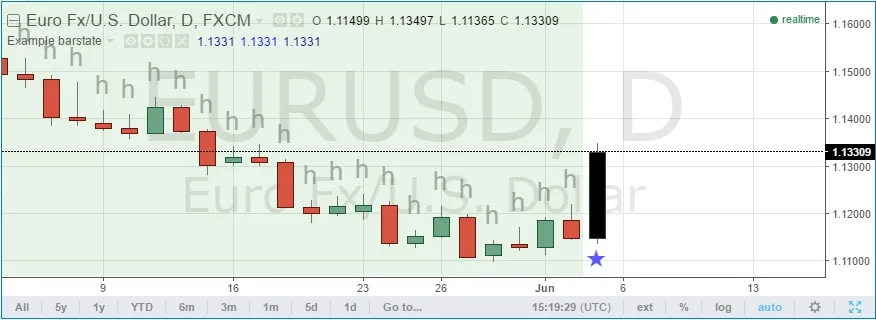Notice!
This is documentation for v3, which is no longer
actively maintained.
For up-to-date documentation, see the latest version.
Bar states. Built-in variables barstate.*
A set of built-in barstate.* variables allows users to define a state
of the bar which calculations are being made for.
barstate.isfirst—trueif current bar is the first in the whole range of bars available,falseotherwise.barstate.islast—trueif current bar is the last in the whole range of bars available,falseotherwise. This flag helps to detect the last historical bar.barstate.ishistory—trueif a current data update is a historical bar update,falseotherwise (thus it is real-time).barstate.isrealtime—trueif current data update is a real-time bar update,falseotherwise (thus it is historical). Note that every real-time bar is also the last one.barstate.isnew—trueif current data update is the first (opening) update of a new bar,falseotherwise.barstate.isconfirmed—trueif current data update is the last (closing) update of the current bar,falseotherwise. The next data update will be an opening update of a new bar1.
All historical bars are new bars. That is because of the fact that the script receives them in a sequential order from the oldest to the newer ones. For bars that update in real-time a bar is considered as a new bar only at the opening tick of this bar.
Here is an example of a script with barstate.* variables:

The script draws red and blue symbols under the first and the last bars accordingly and puts “h” on the top of the historical bars. Background of the new bars will be highlighted green, and the real-time bars will be colored black.
Footnotes
-
Variable
barstate.isconfirmedreturns the state of current chart symbol data only. It does not take into account any secondary symbol data requested with thesecurityfunction. ↩